At the start of the day, after that first cup of coffee, most ceiling installers are clean, strong, and at the top of their game. Towards the end of the day, despite their hustle and productivity, some installers are tired but still in first-rate condition. Others, however, are dirty, worn out and may not be doing the intended job. Successful contractors look for employees that can go the distance.
The same can be said about suspended ceiling panels. Some will still be in great shape decades after installation; others begin to fall apart even before they are out of their shipping cartons. Panel breakage and punch list work eat into profits, especially if other trades futz around with panels to do above-ceiling work. You install these types of panels when you have to, even when you know they’ll “ugly out” before they wear out. Yet, successful contractors gain the trust of their customers by recommending the best product for each job.
Installers may have a gut instinct about products based on their years of experience, but that may not be enough to convince skeptical architects and facility managers to break their product selection habits. Fortunately, there are test methods and accepted industry standards that can inform objective decision making.
Because reliable data on ceiling durability and cleanability has been difficult to find, this article reports on recent third-party laboratory tests comparing the performance of widely used mineral fiber panels with thermoformed rigid vinyl panels.
Strength Properties
High strength panels are more likely to resist damage during installation and maintenance, withstand ordinary use and have increased service life. Testing according to ASTM D1308 – Strength Properties of Prefabricated Architectural Acoustical Tile or Lay-in Ceiling Panels evaluates four criteria (findings are summarized in Table 1):
Hardness: The force required to press a steel sphere into a panel has a direct correlation to hardness and usually indicates impact and abuse resistance.
Friability: Specimens are placed in a rotating tumbler and then weighed at prescribed intervals.
Sag: Panels are exposed to elevated temperature and humidity, then returned to ambient room conditions and measured for sag. The results also suggest how a product responds to leaks, condensation, and other sources of liquid water damage.
Transverse Strength: Panels are tested in a hydraulic testing machine and the load is noted at which panels break or are unable to resist more load. The greater the modulus of rupture (flexural strength), the less likely a panel is to be damaged in the field.
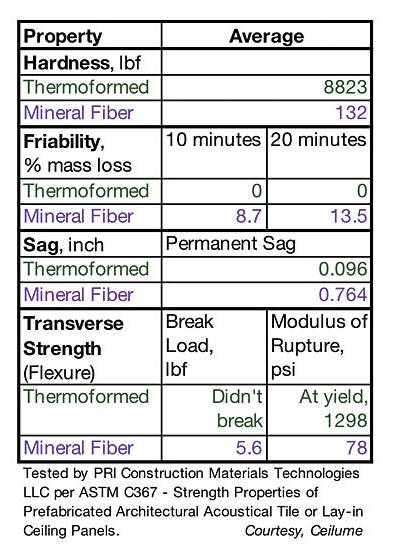
Stain Resistance and Cleanability
Stained or dirty panels harm the appearance of a room and can lead to replacement before they wear out. In contrast, panels that are stain-resistant and cleanable offer significant advantages in sustainability, economics, and life-cycle performance. Fourteen common staining agents were tested on white mineral fiber panels and four colors of thermoformed panels in accordance with ASTM D1308 – Effect of Household Chemicals on Clear and Pigmented Organic Finishes. Staining agent were placed on panels, left overnight, then cleaned and examined. (Findings are summarized in Table 2.)
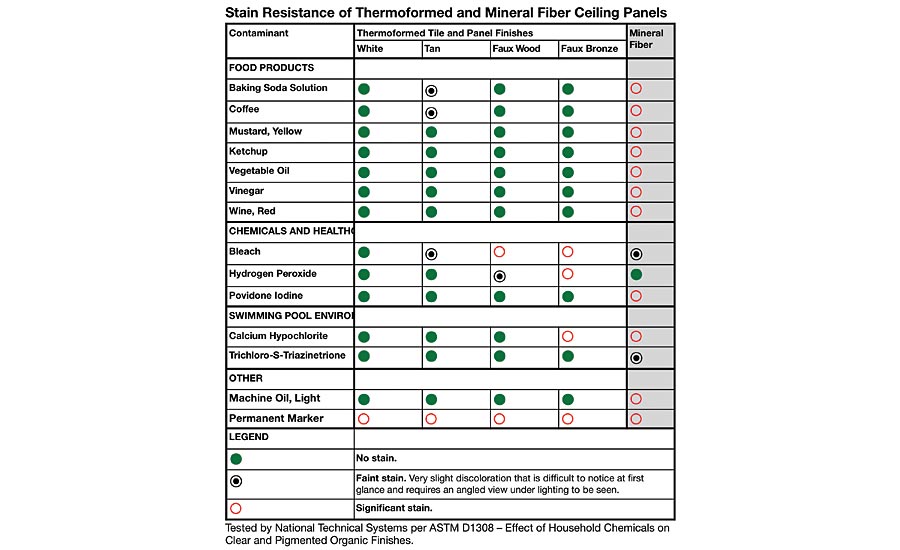
Mineral fiber panels showed “significant stains” from all the tested food products, povidone iodine, calcium hypochlorite and light machine oil. They had faint stains from bleach and one of the chloride solutions. The only staining agent they resisted was hydrogen peroxide.
Thermoformed panels proved highly stain-resistant. With the exception of permanent marker which stained all specimens, white samples showed no staining with any of the substances. Latte samples had minor stains from baking soda, coffee, and bleach. Faux metal and wood finishes resisted everything except three harsh chemical solutions: bleach, hydrogen peroxide, and calcium hypochlorite.
Hiring Considerations
Mineral fiber panels typically have porous or fissured surfaces that make it difficult to remove stains or dirt. Further, they are relatively fragile and prone to damage when handled.
Thermoformed panels are impervious to moisture and easily cleaned, factors that make them acceptable for use in food handling and healthcare areas and in wet or humid areas. Their strength properties make them durable enough to install and maintain without damage and able to withstand other harsh conditions of use.
Durability and cleanability are not the only factors to consider when selecting a ceiling product. The products in this test program, however, have similar acoustic, fire safety, light reflectance and other characteristics. They also differ in ways that may or may not be important to a particular project.
In the same way you might do a background check before hiring an employee, it is wise to look at verified performance characteristics before hiring a ceiling panel. Performance varies between brands of similar products as well as between product categories, so ask panel manufacturers for test reports demonstrating panel strength and cleanability. The methodologies used in this study can be used to investigate other ceiling products.













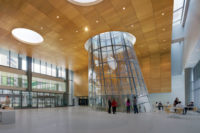
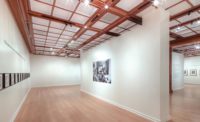
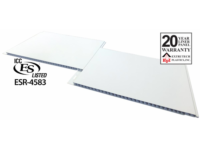
Report Abusive Comment